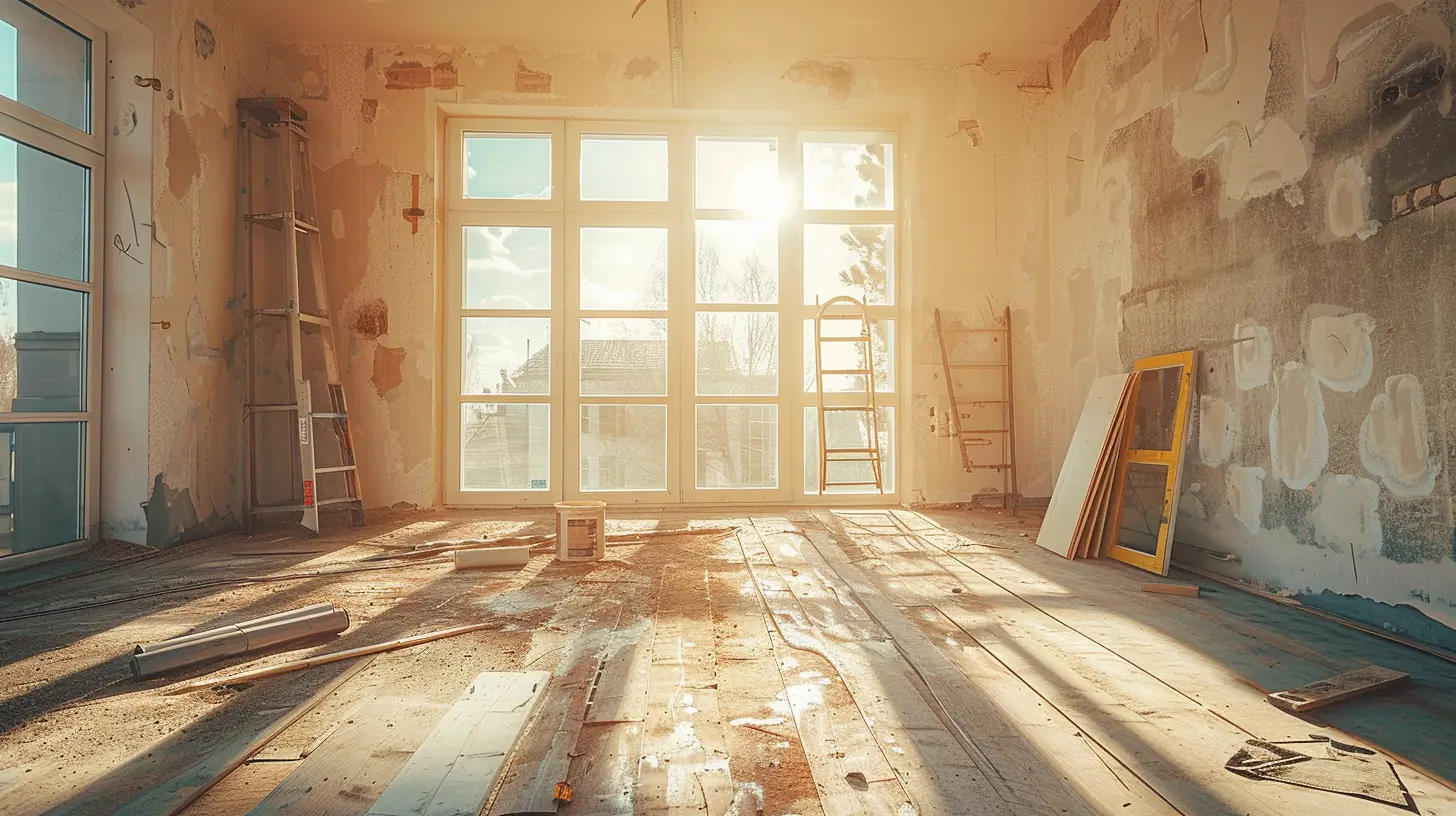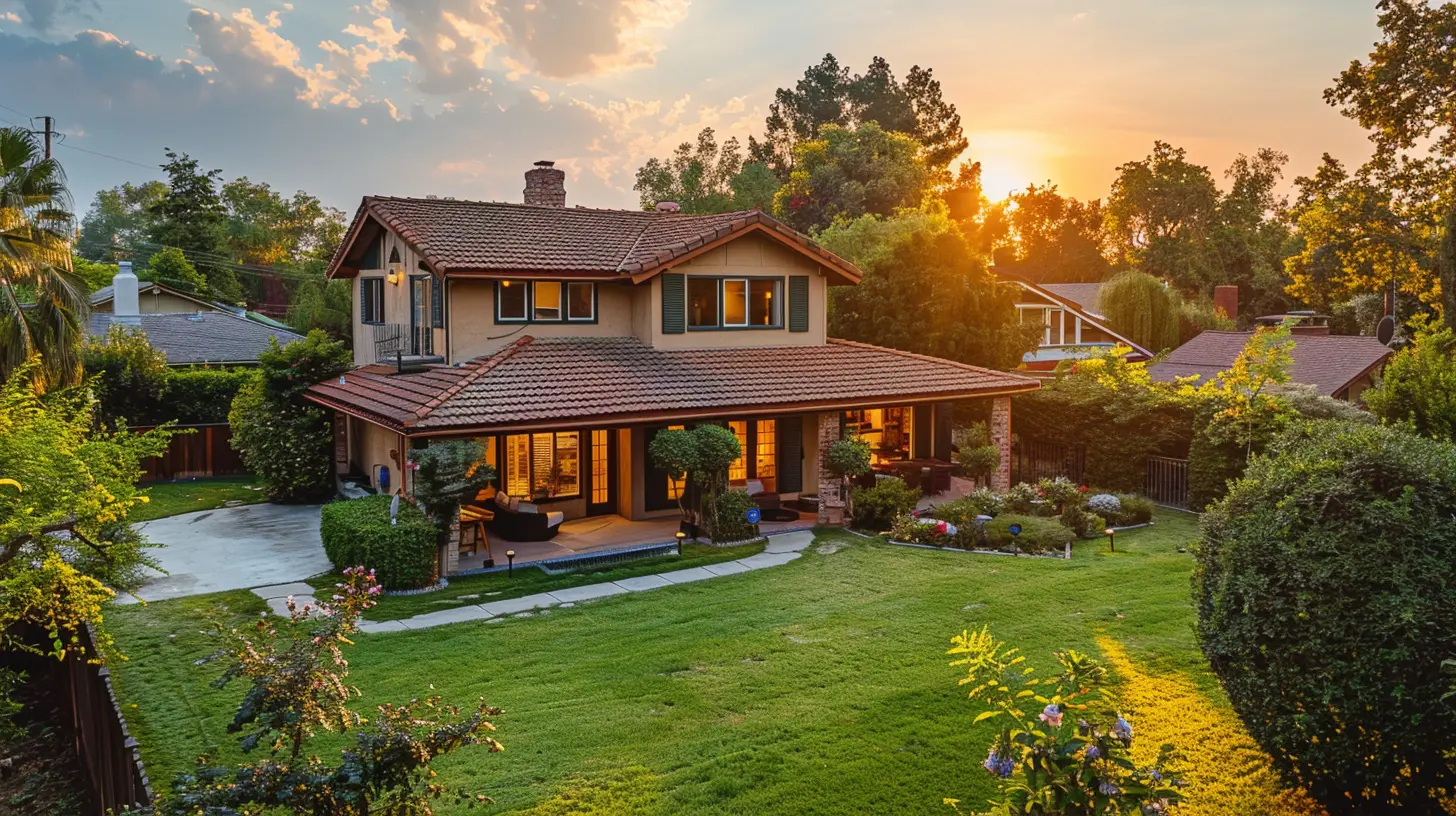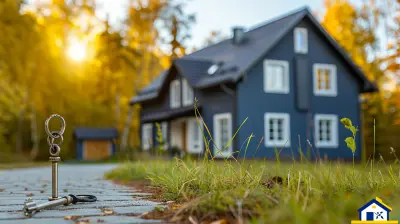How to Choose the Perfect Property for Your Next Flip
19 October 2025
So, you've been binge-watching all those home flipping shows, and now you're itching to pick up a rundown house, give it a glow-up, and cash in big time. Heck yes, welcome to the wild (and often weird) world of house flipping! But—before you grab a sledgehammer and start channeling your inner renovation superstar, there’s one teeny-tiny, massively important step to handle first: choosing the right property to flip.
Let’s face it—flipping can be fabulous, or it can flop. The difference? It all starts with the property you pick. So, grab your coffee (or wine, we won't judge), and let’s dive into how to choose the perfect property for your next flip.
Why Choosing the Right Property is Half the Battle
Picture this: you buy a house thinking it's a hidden gem, but once you start ripping out the shag carpet, you find structural issues, ancient plumbing, and maybe a family of raccoons living in the attic. Yikes!The truth is, not every deal is a good deal. In the flipping game, profit margins are razor-thin, and one wrong move can eat up your entire ROI (Return On Investment—yeah, we’ll throw in a little lingo too).
Picking the right property isn’t just step one—it’s the step that sets the whole tone for your flip. Choose wrong, and you might be flipping your way into debt.
1. Know Your Budget Like the Back of Your Hand
Let’s start with the cash. Before you go house hunting, figure out exactly what you can afford.💰 Factor in More Than Just the Purchase Price
You’ve got more than just the sticker price to worry about. Think renovation costs, permits, taxes, contractor fees, holding costs—the works. And don’t forget to pad your budget by about 10–20% for those lovely little “surprises” that always seem to pop up (like that aforementioned raccoon family).👍 Pro Tip:
Use the 70% Rule. In general, you shouldn’t pay more than 70% of the home’s After Repair Value (ARV), minus repair costs.Example:
If a home’s ARV is $300,000 and it needs $50,000 in repairs—
Max price to pay = (.70 x $300,000) - $50,000 = $160,000
Stick to the math, and you'll make money. Ignore it? You’re rolling the dice.
2. Location, Location… You Know the Rest
You can fix ugly wallpaper—you can’t fix a bad neighborhood. Location is everything. It determines how fast your property sells, how much you can charge, and how much appeal you can create.🏡 What to Look for in a Flip-Worthy Neighborhood:
- Up-and-coming areas where prices are rising- Close to schools, parks, and shopping centers
- Low crime rates (buyers care, and so should you)
- Growing job market
- High demand and low inventory
Even if the house is a trash heap, if it’s located in the right zip code? You’ve struck gold.
3. Choose the Right Type of Property
You’re not flipping a mansion (unless you're a seasoned pro with deep pockets). Start small and manageable. Think single-family homes or townhouses that can be upgraded quickly.🛑 Avoid These on Your First Flip:
- Luxury listings (that market can be slow and picky)- Rural properties (tiny buyer pool)
- Homes with major structural damage (unless you have deep reno experience)
Trust me—don’t try to be a hero. Save the big projects for later.
4. Work With a Rockstar Real Estate Agent
You wouldn’t perform heart surgery without a doctor, right? Same vibe here. You need a real estate agent who knows the local market, understands investment properties, and has your back.A good agent helps you spot bad deals, negotiate hard, and even recommend good contractors. They’re basically your secret weapon.
✔️ Questions to Ask a Potential Agent:
- Do you work with investors regularly?- Can you identify ARV in this area?
- How quickly do homes sell in this neighborhood?
- What kind of renovations have the best ROI around here?
Bring the questions. You deserve smart answers.
5. Crunch the Numbers (Again and Again)
This isn’t the time to wing it. Before you buy anything, you need a mini business plan for that flip.Key Numbers to Know:
- Purchase price- Repair costs
- After Repair Value (ARV)
- Closing and holding costs
- Projected profit margin
Make sure all of those numbers make sense together. Even if a house is a “steal,” if you over-renovate or overestimate the ARV, you'll eat into your profits fast.
6. Check the Bones—Not Just the Cosmetics
We all love a fresh coat of paint and a pretty backsplash, but when you're flipping, it's what’s under the hood that matters.🕵️♀️ Inspect These Critical Areas:
- Foundation (cracks = red flag)- Roof (how old is it?)
- HVAC system (a new one can cost $$$)
- Electrical and plumbing (do they meet code?)
- Termite or water damage (nobody wants a hidden swamp)
Even if you love the look of a house, don’t fall head over heels until you know it’s structurally sound.
7. Buy Low, Sell High (Duh, Right?)
You make your money when you buy, not when you sell. That’s one of the golden rules of flipping.🔍 Look for These Deal-Makers:
- Foreclosures- Short sales
- Estate sales
- Properties that need “TLC,” but not a total gut job
- Motivated sellers (divorce, relocation)
These homes are often priced below market—and that’s your sweet spot.
8. Think About Your Ideal Buyer
Are you flipping for a first-time buyer? A retiree? A family of five? Get specific. Knowing who your potential buyer is helps determine what kind of upgrades you should make.🤔 Ask Yourself:
- What’s their budget?- What features will wow them?
- Do they care more about an open concept or a second bathroom?
- Should you splurge on smart home tech or stick to basics?
Tailor your flip to your market, not your personal Pinterest board.
9. Avoid the “Money Pit” Syndrome
If the house is dirt cheap, there’s usually a reason—and it’s rarely a good one.🚩 Red Flags to Watch For:
- Strange smells (mold, sewage—ew)- Floors that slope or creak
- Major roof damage
- Strange additions or DIY jobs gone horribly wrong
- Unpermitted work
Don’t get distracted by “cheap.” Cheap can turn expensive real quick.
10. Talk to the Neighbors (Yes, Really!)
This might sound weird, but neighbors are a goldmine when it comes to info. They can tell you:- How long the house has been empty
- What previous owners were like
- What homes in the area typically sell for
- Whether the street has any noise/crime issues
Plus, if you're friendly, they might even help keep an eye on your property during the reno. Win-win!
11. Don’t Fall in Love (Seriously)
This isn’t your dream home. It’s an investment—treat it like one. If you start getting emotionally attached, you might make changes that aren’t financially smart.That Italian marble? Gorgeous. But does it make sense in a house where the comps show laminate floors? Nope.
Stay focused, stay rational, and save the dreams for your personal home.
12. Timing is Everything
You want a property that allows you to get in, fix it fast, and get it back on the market. Every extra day you hold the property costs you in taxes, mortgage, utilities, and insurance.⏳ Consider:
- Time of year (spring and early summer are ideal selling seasons)- Contractor availability
- Supply chain issues (materials and appliances are still delayed in some areas)
Speed = profit. So pick a property you can turn around quickly and efficiently.
Wrapping It All Up (Because You’re Almost a Pro Now!)
Alright, flipper-to-be—are you feeling pumped yet? You should be! Choosing the right property is a puzzle, sure, but with the right know-how (and maybe this handy guide), you’ve got what it takes to conquer the flipping world one house at a time.Remember: start small, stay smart, and always double-check your numbers. There’s no shame in walking away from a bad deal. In fact, that might be the smartest flip decision you ever make.
Here’s to hammering out profits and living that #FlipperLife.
all images in this post were generated using AI tools
Category:
House FlippingAuthor:

Kingston Estes
Discussion
rate this article
1 comments
Charlotte Thompson
Choosing the perfect property for your next flip requires careful consideration. Focus on location, potential renovation costs, and current market trends. Prioritize properties that need cosmetic updates rather than extensive repairs to maximize your return on investment. A well-researched decision can lead to a successful and profitable flip!
October 19, 2025 at 4:22 AM

Kingston Estes
Thank you for your insightful comment! I completely agree—location, renovation costs, and market trends are crucial in finding a profitable property to flip. Prioritizing cosmetic updates can indeed enhance ROI.


